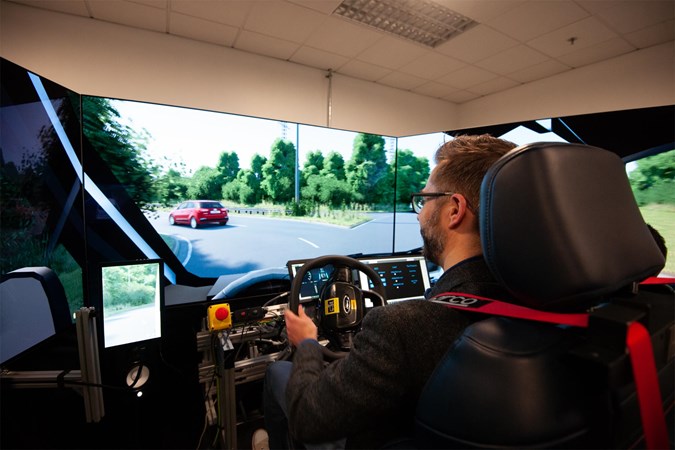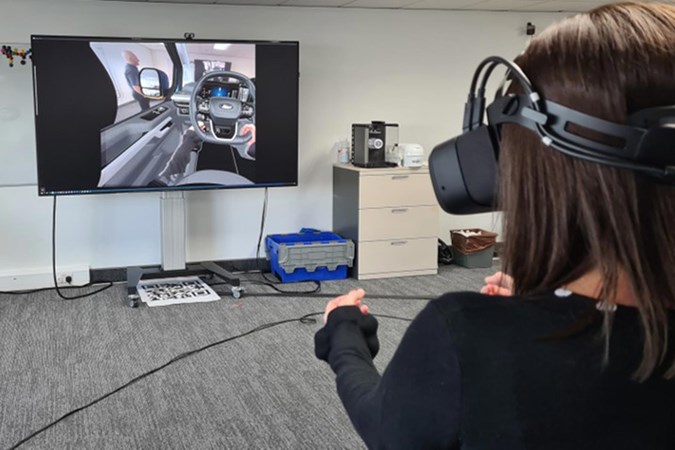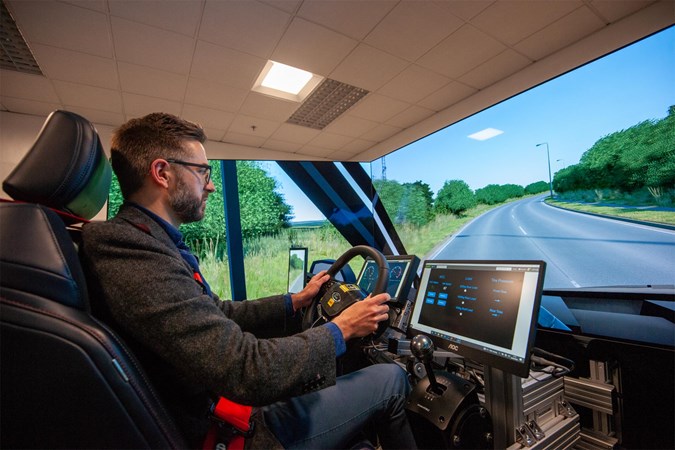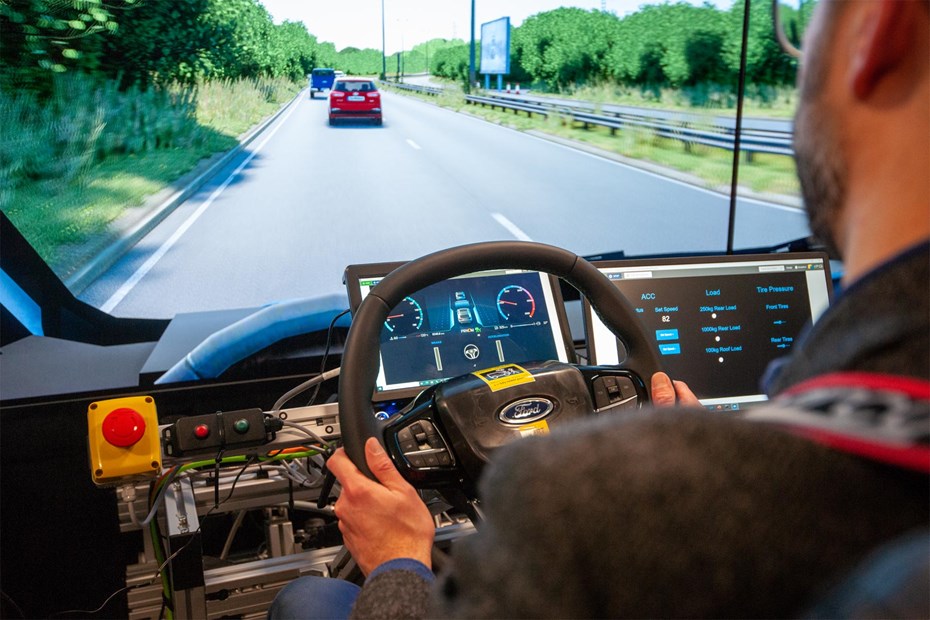Developing a new vehicle is not the work of a few weeks. There is a reason that vans go so long between being replaced and it isn’t just because customers are less bothered by the latest trends than car buyers.
The new Ford Transit Custom was the brand’s first vehicle to be developed using a new system that Ford reckons will lead to huge time and efficiency savings when it comes to getting a vehicle ready for the road. This will see developers using a large and hyper realistic simulator rig to assess various elements of how a vehicle performs, cutting down the number of physical test drives that would otherwise take place. They can play around with van payload, change the steering and ESC settings and check things like the headlight systems.
As well as speeding up the process, it could also drastically reduce the carbon emissions of testing, cutting down the need to transport test vehicles and then drive them. There is an increasing need for this testing, too, as customers are getting more demanding and want change quicker.
Excitingly, this technology might not be limited to the development studio – in the future it could help you fine tune which van you want to buy. Smaller, simpler simulators could be used in dealerships for customers to use.
What does Ford’s simulator do?
If you’re a gamer into your racing games, then Ford’s simulator looks like the ultimate setup. It features seven screens, a real Ford steering wheel and pedals, a full-size seat, gear lever and various buttons dotted around. It even has a proper five-point racing-style harness to keep you pinned in place.

This might seem like overkill, and not in taking with driving a van, but there is a real and well-thought through reason behind it – you are held tightly so that you get the full sensory experience provided by the raised platform on which the seat is positioned. Every bump, jolt or lean around a corner is transmitted via the multitude of tippers and systems surrounding the seat.
The project is known as ViVID, and it is the product of multiple organisations coming together. It wasn’t originally a Ford endeavour – McLaren was involved at the start, but withdrew at the end of Q1 2021.
That was when Ford came in, joining the other partners the Advanced Propulsion Centre (APC), engineering consultant Horiba Mira, software company IPG Automotive and Loughborough University.
Hang on, surely a big computer is nothing like driving the real thing?
Of course, some things will still need you to head out in a real prototype and get some miles in, and Ford is not ditching the idea of physical test vehicles, it’s just aiming to cut down the number of them that it builds. The aim of the simulator is to be able to check the sort of thing that you don’t really need an actual van for.
Plenty of things are all controlled by a computer on a modern van anyway, so why not check whether they do what they are supposed to do by using another computer? In fact, the chair of Ford of Britain, Tim Slatter, said that it is not financially viable to do the billions of miles necessary to develop the autonomous vehicle technology that is set to increase in coming years.
One example given is that, while developing the recently launched Ford Transit Connect, the steering team found a fault a year earlier than they would have done had they worked in the traditional manner. They then told the brakes team and the team working on the powertrains, meaning saved effort and time all around.
‘We talk about left shifting the traditional way of producing and assessing a test vehicle – those thousands of hours,’ said Ford’s manager of virtual engineering, David Brook. ‘In the virtual world you don’t have to do that. If you are the brake engineer you don’t care what the powertrain is doing and you are often waiting for them to do what you need them to do. In a virtual world you don’t need to do that. They can make those assessments months or years earlier.’
What can the simulator check?
Another bonus of a static simulator is that you can change loads of settings at the click of a few buttons. Ford says that it can change a wide range of things on the virtual van, in mere moments.
One example is payload. The simulator allows the technicians to test the impact of a 1,000kg payload versus an empty loading bay almost instantly on the simulator, while loading or unloading an actual van is a lengthy process.
It can also check how much more or less fuel is likely to be used courtesy of different driving conditions. According to the simulator, platooning – or following closely behind other vehicles – can boost economy by 4% apparently.
It can also assess elements such as active headlamp development – in the UK you have to wait for when it is dark, even though you only want the basic test of whether it dips when you want it to.
IPG also created virtual road surfaces and conditions. By tweaking the settings, one countryside route in the simulation has 13,000 different scenarios with different weather, broken surfaces and varied visibility.
To create these scenarios, Horiba MIRA drove four real-life routes, each 90km and over a variety of urban, rural and motorway roads. They built a digital replica of the routes and did the same with the test vehicles’ engines.
Will the tech ever be available to the public?
Yes, potentially. While the Ford simulator is busy helping create the next generations of the brand’s commercial vehicles – it was involved in the Transit Custom and Transit Courier development – future versions could have a more public-facing role.
It’s plausible that it could end up in dealerships, so you can go in and try out loads of different versions of a van without having to dedicate several days to jumping in and out of every demonstrator that they have. MIRA says that this could happen as soon as this year, although this would require a retailer or manufacturer to take the plunge and invest in one.

Ford is also using a sophisticated VR headset that allows you to walk around and inside a model of a vehicle. This means that prospective buyers, or developers, can look at the latest features remotely without having to head to a physical location to check out a new van.
What is the simulator like to use?
We were able to have a go on Ford’s simulator, complete with its racing-style seat, van-specific steering wheel and pedals and seven screens. Three of these screens are huge, giving a much bigger image of the virtual road than the windows on a real van. Two more act as the door mirrors, while the final two are the equivalent of the dashboard.

In terms of the experience, the look is hyper realistic, with the other vehicles on the road all incredibly lifelike right up to the point that you drive through them. Thankfully the version we drove just pretended the other cars didn’t exist should you barrel through too quickly as we might have done at one point.
Every other lump or bump on the road, however, sent a variety of different judders through the virtual cabin. Head around a corner and you get a sense of leaning as well.
It’s all rather unnerving, truth be told, and after a few minutes it brought about a strange sensation – car sickness. Everything we looked at suggested we were moving, but our body knew otherwise, which brought about a conflict.
Apparently, this doesn’t happen to everyone but is common. It is also something you get used to fairly quickly, which is good news for the technicians.
We might not be volunteering to sign up as a tester any time soon, but Ford is committed to it and it is now playing an integral part of Ford’s commercial vehicle future.
Just so you know, we may receive a commission or other compensation from the links on this website - read why you should trust us.










